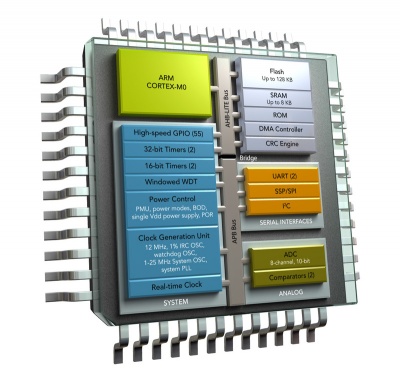Implementing Hibernation on the ARM Cortex M0
From iis-projects
Contents
Short Description
In Internet of Thing (IoT) applications, energy is often available only sporadically. Since power can be lost at any time, processing larger tasks on a microcontroller in this environment requires special measurements to be taken in order to avoid restarting the entire task after each power outage.
Check-pointing, i.e., saving the processor state at predefined stages during processing, is a way to resume computation after a power outage. If a warning signal is available before the power outage, i.e., the supply voltage is dropping, the processor state can be saved only when a power outage is imminent and thus superfluous saving operations are avoided.
Both scenarios require a mechanism to save a snapshot of the processor state in a non-volatile memory. This mechanism is commonly known as hibernation.
The goal of this Semester Thesis/Group Project is to implement a proper hibernation mechanism for the ARM Cortex M0. The basic procedure for the hibernation mechanism will be provided, but will have to be adapted. In a first step, the student will have to get a deep understanding of the processor architecture. In a second step, he will implement the hibernation mechanism in C and Assembler. In a last step, the student will perform measurements to evaluate the transitions cost to enter and leave the hibernation mode.
If time permits, the project can be extended to a heterogeneous dual-core ARM Cortex M4/M0, or alternatively, different hibernation mechanism and strategies can be implemented and evaluated.
Status: Available
- Semester Thesis/Group Project
- Supervision: Pascal Alexander Hager (IIS)
Professor
Character
- 50% Theory
- 30% Implementation
- 20% Measurements
Requirements
- Basic Knowledge of C
- Understanding of general processor architectures and concepts (TIK lectures)
